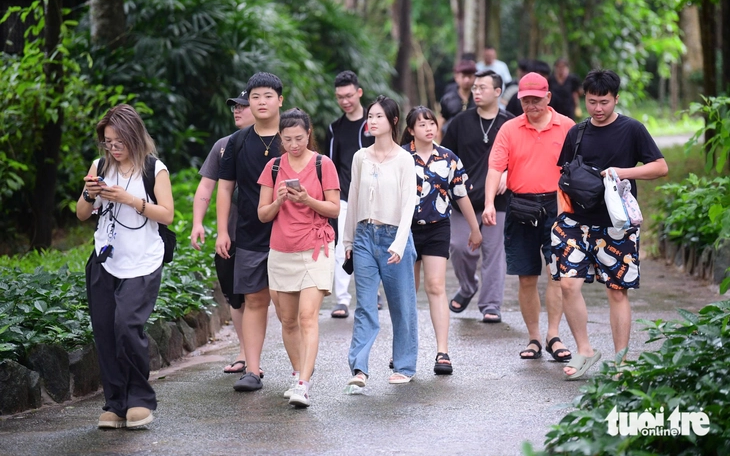
Offering new tourism products is expected to draw international tourists to Vietnam. Photo: Nam Tran / Tuoi Tre
As of the end of August, the country had welcomed 13.9 million foreign visitors, a 21.7-percent year-on-year increase, meeting some 56 percent of the year’s ambitious target.
Reaching the 25-million mark means drawing in 2.75 million international tourists per month from September to December.
While the tourism sector has shown impressive recovery and growth, Vietnam has relied on two key markets, including China and South Korea, together accounting for 46 percent of total international arrivals.
This reliance poses significant risks if either market experiences disruptions.
Pham Ha, chairman of LuxGroup and CEO of Lux Travel DMC, told Tuoi Tre (Youth) newspaper that the country’s tourism growth has been remarkable, but sustaining momentum over the final quarter of the year will be a formidable challenge.
"From now until year-end, we only have three months left. The goal of attracting 2.75 million visitors per month is extremely difficult to achieve, even during peak international travel seasons," Ha said.
Sharing a similar viewpoint, Le Thi Hoa, director of Hanoitourist Travel Company, noted that while the year-end holiday season, including Christmas, New Year, and the Lunar New Year, presents favorable conditions to draw visitors, turning potential into actual arrivals is another matter.
“All hotels under Hanoitourist Corporation are already fully booked for the final months of the year, which is an encouraging sign," Hoa said.
“Apart from Hanoi with the charm of autumn, surrounding destinations are also competitive against others in the region."
Strategic push needed to meet target
Deputy head of the Vietnam National Authority of Tourism Ha Van Sieu emphasized that achieving the 25-million target requires a significant commitment from the state to local levels, involving both public and private sectors.
Sieu hinted at several strategies to help reach the target, including leveraging digital technologies for sales across diverse market segments, opening new flight routes, especially direct and charter flights, to major markets like India, Australia, Russia, and the U.S., and capitalizing on the peak tourism season.
He also stressed the need to stage high-profile, international-level events, including cultural festivals, concerts, sporting events, golf tournaments, and trade fairs, in popular destinations such as Phu Quoc, Nha Trang, Da Nang, and Ho Chi Minh City.
At the Vietnam Tourism Awards 2025 held in Hanoi on Saturday, Deputy Prime Minister Mai Van Chinh called for acceleration and innovation in the industry.
He emphasized the importance of digital transformation, smart tourism ecosystems, and sustainable development.
Building a smart tourism ecosystem will allow visitors to enjoy more seamless experiences in Vietnam, he said.
He also highlighted the need to develop green tourism and community-based travel, integrated with nighttime and circular economy models – ensuring that each visitor’s journey contributes meaningfully to national economic development.
Balancing tourist number and quality
Ha from LuxGroup pointed to Thailand’s tourism strategies such as additional visa exemptions, free domestic flights, and hotel vouchers for key source markets as models worth considering.
“We don’t necessarily have to reach 25 million foreign visitors, but boosting tourism revenue by 30 percent would already be a significant achievement for Vietnam,” he stressed.
Aside from tourist numbers, Vietnam should place strong emphasis on the quality of tourism and focus on increasing visitor spending.
Vietnam has everything to satisfy luxury travelers. What the country is lacking is a premium brand image.
“The goal should be to ensure that every visitor spends to the very last dollar before leaving Vietnam,” he added.



Max: 1500 characters
There are no comments yet. Be the first to comment.